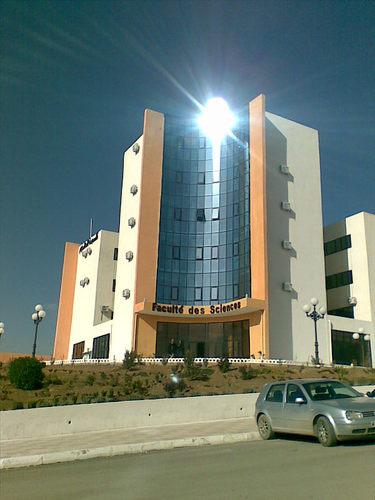|
| Titre : |
Bi-objective modeling and optimization by greedy stochastic algorithm |
| Type de document : |
document ÃĐlectronique |
| Auteurs : |
Hayet Dahmri, Auteur ; Bouamama, Salim, Directeur de thÃĻse |
| Editeur : |
SÃĐtif:UFA1 |
| AnnÃĐe de publication : |
2024 |
| Importance : |
1 vol (119 f.) |
| Format : |
29 cm |
| Langues : |
Anglais (eng) |
| CatÃĐgories : |
ThÃĻses & MÃĐmoires:Informatique
|
| Mots-clÃĐs : |
Multi-objective combinatorial optimization
Stochastic algorithms
Greedy heuristic
Minimum weight minimum connected dominating set problem |
| Index. dÃĐcimale : |
004 - Informatique |
| RÃĐsumÃĐ : |
Multi-objective optimization problems (MOPs) involve the simultaneous optimization
of multiple, often conflicting objectives, and have wide-ranging applications in
fields such as engineering, business, economics, and logistics. Most MOPs are classified
as NP-Hard, meaning that finding an exact optimal solution is computationally
expensive and impractical for large instances. In such cases, stochastic methods are
preferred, as they offer near-optimal solutions within a reasonable time, as opposed
to exact methods, which guarantee optimal solutions but require exponentially longer
runtimes.
This thesis addresses a bi-objective optimization problem known as the Minimum
Weight Minimum Connected Dominating Set (MWMCDS) problem. The objective is to
minimize both the number of nodes (cardinality) and the total weight of the connected
dominating set (CDS) in a given graph, a well-known challenge in graph theory.
To tackle this problem, three greedy stochastic algorithms are proposed. The first,
Greedy Simulated Annealing (GSA), applies the simulated annealing technique with
an aggregated objective function to guide the search process. The second, Improved
NSGA-II (I-NSGA-II), is an enhanced version of the widely used NSGA-II algorithm,
specifically adapted for multi-objective optimization. The third algorithm, Multi-objective
Greedy Simulated Annealing (MGSA), introduces a new multi-objective adaptation of
simulated annealing based on Pareto optimization. In all three approaches, tailored
greedy heuristics are integrated to boost the efficiency of the solution process.
Experimental results, based on several performance metrics, demonstrate that the
proposed algorithms outperform existing state-of-the-art methods, achieving superior
results in terms of both solution quality and computational efficiency. |
| Note de contenu : |
|
| Côte titre : |
DI/0083 |
Bi-objective modeling and optimization by greedy stochastic algorithm [document ÃĐlectronique] / Hayet Dahmri, Auteur ; Bouamama, Salim, Directeur de thÃĻse . - [S.l.]Â : SÃĐtif:UFA1, 2024 . - 1 vol (119 f.) ; 29 cm. Langues : Anglais ( eng)
| CatÃĐgories : |
ThÃĻses & MÃĐmoires:Informatique
|
| Mots-clÃĐs : |
Multi-objective combinatorial optimization
Stochastic algorithms
Greedy heuristic
Minimum weight minimum connected dominating set problem |
| Index. dÃĐcimale : |
004 - Informatique |
| RÃĐsumÃĐ : |
Multi-objective optimization problems (MOPs) involve the simultaneous optimization
of multiple, often conflicting objectives, and have wide-ranging applications in
fields such as engineering, business, economics, and logistics. Most MOPs are classified
as NP-Hard, meaning that finding an exact optimal solution is computationally
expensive and impractical for large instances. In such cases, stochastic methods are
preferred, as they offer near-optimal solutions within a reasonable time, as opposed
to exact methods, which guarantee optimal solutions but require exponentially longer
runtimes.
This thesis addresses a bi-objective optimization problem known as the Minimum
Weight Minimum Connected Dominating Set (MWMCDS) problem. The objective is to
minimize both the number of nodes (cardinality) and the total weight of the connected
dominating set (CDS) in a given graph, a well-known challenge in graph theory.
To tackle this problem, three greedy stochastic algorithms are proposed. The first,
Greedy Simulated Annealing (GSA), applies the simulated annealing technique with
an aggregated objective function to guide the search process. The second, Improved
NSGA-II (I-NSGA-II), is an enhanced version of the widely used NSGA-II algorithm,
specifically adapted for multi-objective optimization. The third algorithm, Multi-objective
Greedy Simulated Annealing (MGSA), introduces a new multi-objective adaptation of
simulated annealing based on Pareto optimization. In all three approaches, tailored
greedy heuristics are integrated to boost the efficiency of the solution process.
Experimental results, based on several performance metrics, demonstrate that the
proposed algorithms outperform existing state-of-the-art methods, achieving superior
results in terms of both solution quality and computational efficiency. |
| Note de contenu : |
|
| Côte titre : |
DI/0083 |
|

